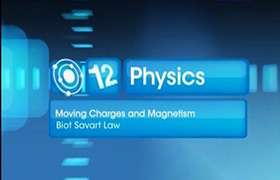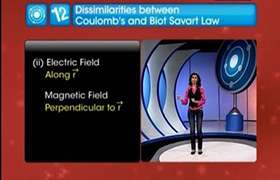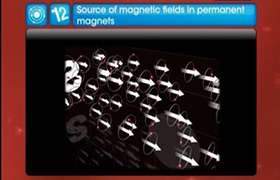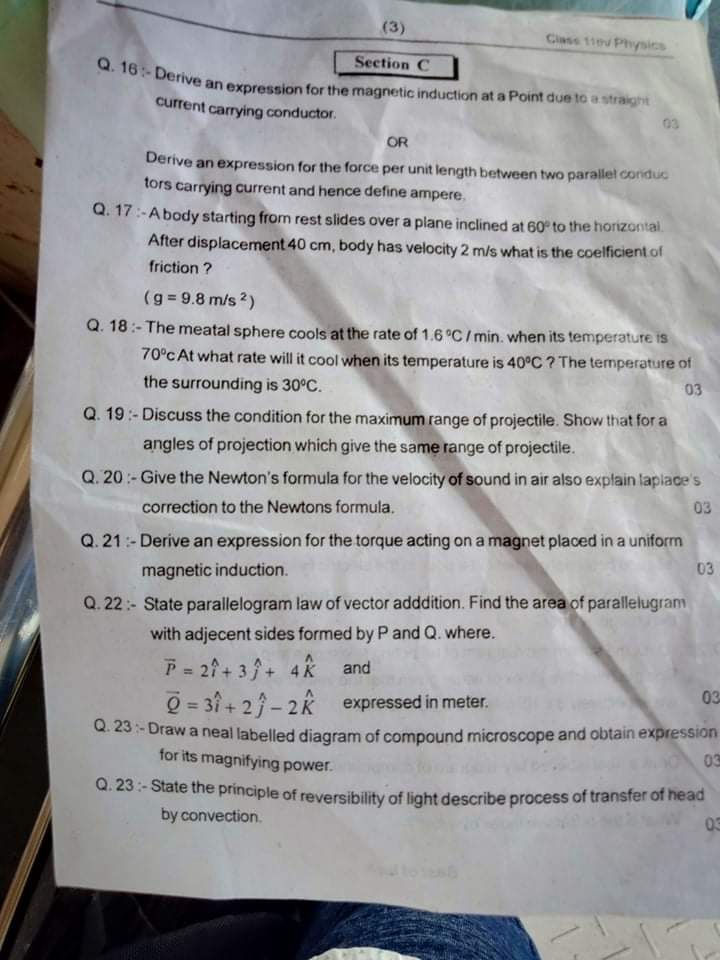CBSE Class 12-science Answered
For any general shape of the wire, magnetic field due to current carrying wire is given by Biot Savart Law:
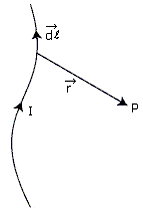
![]()
where is a vector tangent to the current wire equal to dy  for a straight wire along y-axis.
for a straight wire along y-axis.
Consider a circular loop of radius r carrying a current I.
Since, dl ![]()
![]()
![]()
Applying Biot- Savart law:
![]()


For entire closed circular loop;
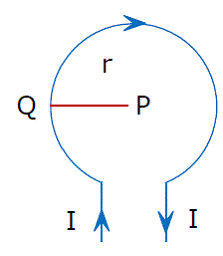

For n turns of a coil;
![]()
The magnetic field lines due to a circular wire form closed loops. The direction of the magnetic field is given by right hand thumb rule.
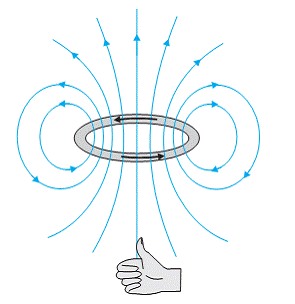
The current carrying loop produces a magnetic field around it, whose magnetic moment is given as I x A(here, I is the current through the loop and A is the area of cross-section; hence it behaves like a magnet.
OR
The principle behind the working of a cyclotron is that in a uniform magnetic field, charged particle executes uniform circular motion with a frequency that is independent of its radius (which depends on the energy of the particle)
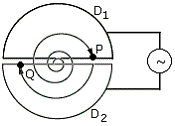
A cyclotron has a uniform magnetic field spread over a circular region split in two halves by two semi-circular D's, D1 and D2.
Let us assume for definiteness that the particle has positive charge. Then, as it comes around in D1 clockwise to point P, D1 and D2 are so connected to an alternating voltage that at this point, D1 is at a higher potential than D2. This accelerates the particles, so that it gains kinetic energy by ![]() T = q(V1 - V2) where V1 and V2 are potentials of D1 and D2 respectively.
T = q(V1 - V2) where V1 and V2 are potentials of D1 and D2 respectively.
This increases the radius of circular motion since  and is proportional to square root of kinetic energy.
and is proportional to square root of kinetic energy.
Since frequency of circular motion, given by  is independent of r, the frequency of alternating voltage is made twice fc, so that when the particle reaches point Q, V2 and V1 flip and D2 is at higher potential than D1, so that particle is accelerated again. This goes on till the kinetic energy is high enough and consequently the radius is large enough so that the particle is ejected out tangentially from the magnetic field with high energy.
is independent of r, the frequency of alternating voltage is made twice fc, so that when the particle reaches point Q, V2 and V1 flip and D2 is at higher potential than D1, so that particle is accelerated again. This goes on till the kinetic energy is high enough and consequently the radius is large enough so that the particle is ejected out tangentially from the magnetic field with high energy.
Frequency  is independent of the energy or the speed of the charged particle.
is independent of the energy or the speed of the charged particle.
Upper limit is relativistic speeds. The cyclotron is limited by relativistic effects due to which the mass of the accelerating particle increases with energy and so fc changes after each cycle.
Also, for light charged particles, fc is enormously high and difficult to maintain. Also, it is not easy to maintain uniformity of the magnetic field. To add to that, a charged particle in circular motion (even if it is uniform) is accelerating and all accelerated charges radiate electromagnetic energy, thereby losing energy.

